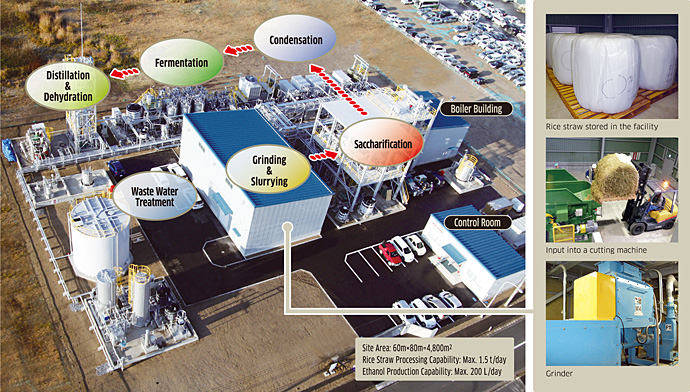Bioethanol Production System
This technology produces bioethanol from materials such as rice straw which does not compete against food supply. Future of this systems is that it uses “hot water-saccharification method” in saccharification process.
Unlike the existing systems this systems does not use sulfuric acid so acid-resistant vessels and recovery equipment are not required and costs are lower because it does not use enzyme.
Features
Circulation and utilization of carbon such as waste rice straw
The straw, which remained in the paddy field after harvest, is decomposed by microbe and becomes CO2, which is emitted into atmosphere. When a rice grows, this CO2 is absorbed by photosynthesis from the atmosphere. Thus, by utilizing the “carbon neutral” bioethanol manufactured from biomass as a fuel for automobile instead of gasoline, it can suppress the emission of CO2.

Biofuel production system Review

Actual running test
Proving test drive was performed with US made Flexible Fuel Vehicle (FFV) by using produced bioethanol (E100 = 100%) as fuel in the Ogata Solar Sports Line (full length: 31 km). Startup and driving tests in winter were also conducted and the results showed the availability of using ethanol in cold region.






